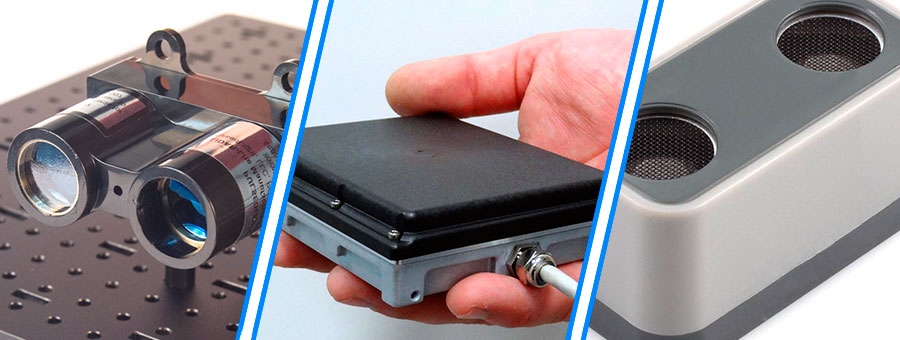New applications and functionalities for UAV systems are continuously appearing. This fast evolution is due to the increasing demand from companies seeking to integrate the benefits of UAVs into industrial processes. It helps the promotion of continuous development policies in the UAV industry. This fast expansion motivates the necessarily associated evolution on onboard sensors and devices.
In Embention our products undergo a continuous improvement in order to maximize their compatibility with all kinds of sensors and devices. Veronte Autopilot can be installed with a wide variety of sensors. Being possible to autonomously control sensors and devices during the operation as well as to use measured data into the navigation algorithms, in the automatic actions or to simply display the data in the screen.
Veronte embodies several controls and communications ports where to connect sensors and devices: CAN Bus, ARINC, RS232, PWM, GPIO, analog inputs, digital inputs, etc…
Some UAVs sensors and devices compatible with Veronte Autopilot
Sensors
- External IMU. IMU (Inertial Measurement Unit) sensors measure the direction and gravitational forces in UAVs thanks to the embedded accelerometers and gyroscopes. In case an additional IMU is needed together with the one in Veronte Autopilot it is possible to have both working at the same time: redundant systems, specific flight envelopes, data capture, …
- External GPS Sensors. GPS sensors can measure the speed and orientation in addition to aircraft position. The integration of a second GPS receiver may be recommended for redundant systems or the integration of yaw estimation without using the magnetometer.
- Air Quality Sensors. These sensors facilitate measuring the presence of contaminants and harmful particles and gasses. Those are often used to create environmental reports, detecting gas leakage, etc…
- Fuel Level Sensors. Having an accurate measure of the fuel level permits to optimize this resource and avoid accidents or the loss of UAVs due to a lack of fuel.
- Temperature Sensors. The integration of temperature sensors makes possible to add information for the flight control, avoiding freezings and detecting possible overheats in the motor or in some components.
- Rain Sensors. Rain sensors are very useful as they permit to adapt flight conditions to the weather. It also permits to schedule automatic actions like go home in case the aircraft is not able to fly under the rain.
Precision altimeters
Among other sensors and devices altimeters permits to improve flight operations and enhance AGL positioning of the aircraft by using it together with GPS receivers and IMU sensors. Thus achieving low-altitude flights and soft landings among other benefits. The system is compatible with different altimeters: radar altimeters, sonar altimeters, LIDAR altimeters, etc…
